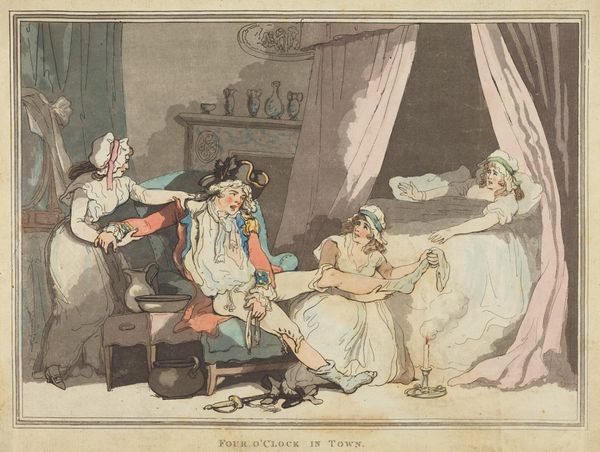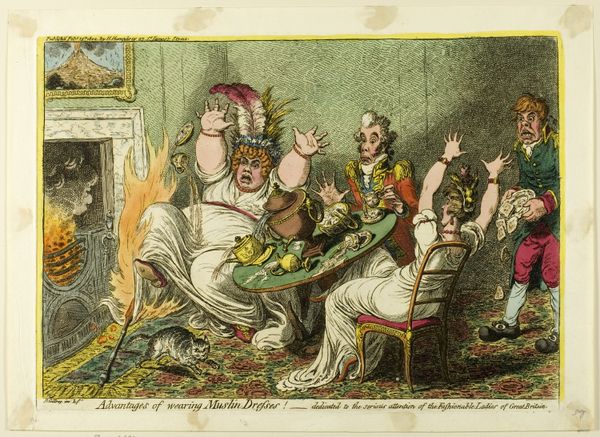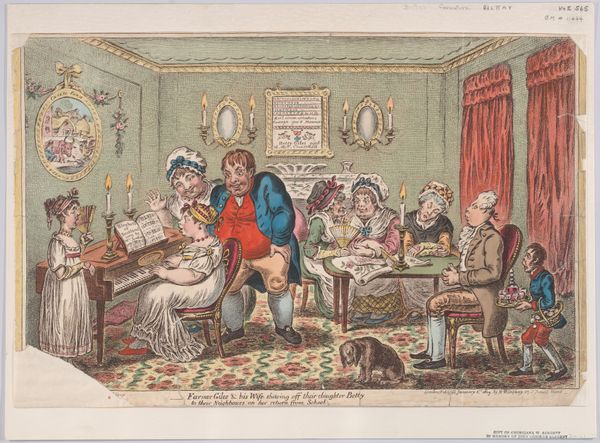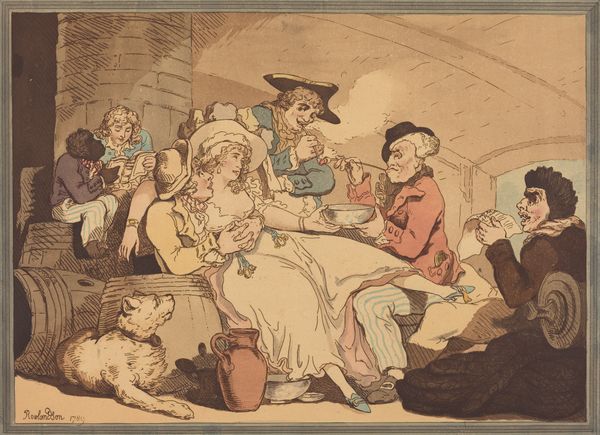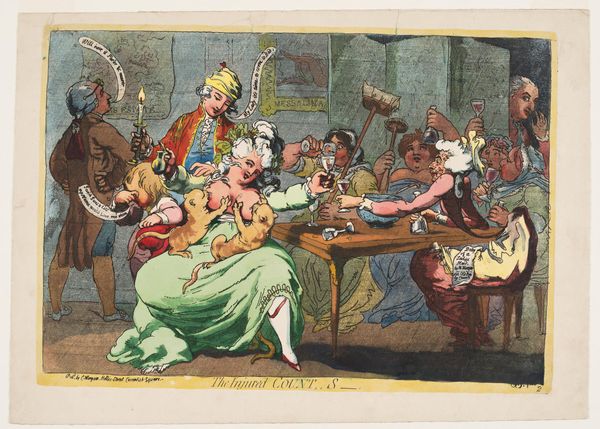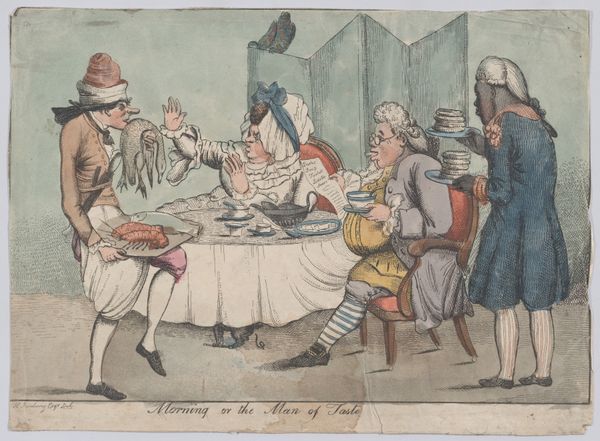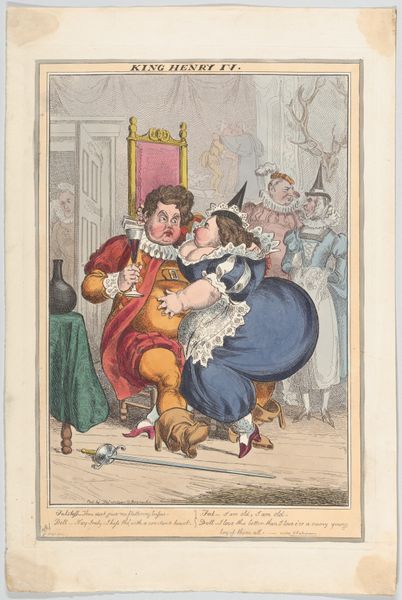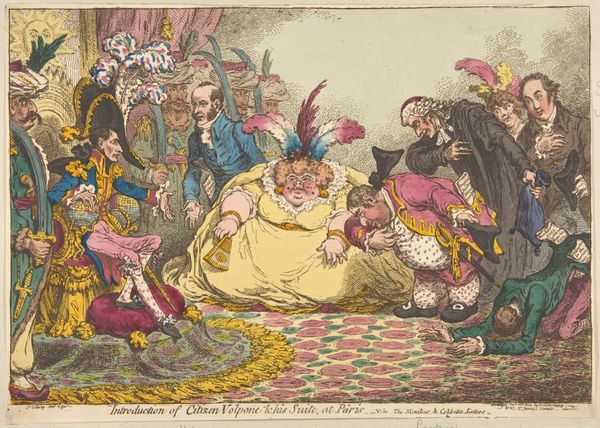
Copyright: National Gallery of Art: CC0 1.0
Curator: Looking at "Comfort in the Gout" by Thomas Rowlandson, made in 1785 using coloured pencil and watercolor—what are your immediate thoughts? Editor: My immediate reaction is…claustrophobia. The interior space feels incredibly dense, packed with bodies and objects. There’s a real sense of social performance playing out, a visual tension that’s rather uncomfortable. Curator: Well, consider Rowlandson's artistic production during that period. Printmaking was booming, and prints like this—often satirical—were mass-produced for consumption by a burgeoning middle class. It’s a manufactured image destined for popular appeal. The lines, the colours…it’s all very deliberate and reproducible. Editor: I see that, but look at how Rowlandson uses caricature. It's not just playful exaggeration; it critiques social status and gender roles. The man suffering from gout is infantilized, coddled by women whose roles seem primarily performative and servile. The scale tips. His illness is almost comical compared to their implied subordination within this domestic performance. Curator: Subordination within domestic labor, to be precise. This bustling scene emphasizes the commodification of comfort. Everything and everyone present, from the serving woman and physician to the decorative textiles, exists within a network of economic exchange catering to the ailing man’s recuperation. Editor: Absolutely. The artwork functions as social commentary but let’s not disregard its emotional resonance. Even within its caricatured style, you perceive a genuine unease and an implicit narrative about dependence and maybe the imbalances in care. Is he really “comforted”? The viewer is asked to decide! Curator: In that respect, the image isn’t just a critique of class dynamics but is also about how illness—particularly among the privileged—is mediated through material objects. It forces us to acknowledge that art, too, can function as an article of consumption. It all has purpose. Editor: I concur. Reflecting on “Comfort in the Gout” reshapes our comprehension not only of the print media industry but illuminates how social power dynamics can shape and determine care and intimacy within domestic and social spaces. Curator: Precisely. Considering art as both a material object, a historical object of labour, and its purpose allows an exploration of larger socio-economic structures present.
Comments
No comments
Be the first to comment and join the conversation on the ultimate creative platform.

